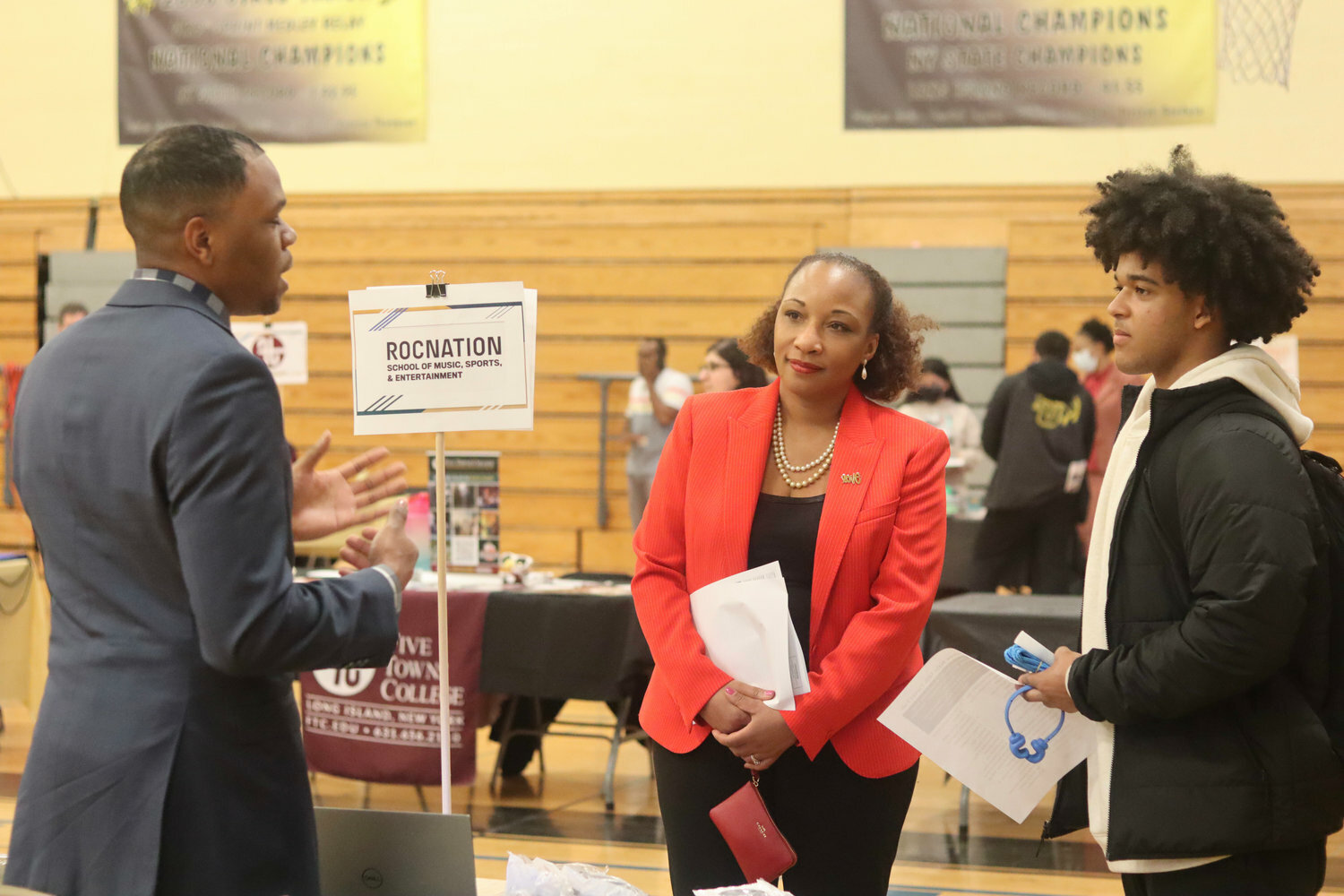Uniondale schools optimistic despite financial challenges ahead
Uniondale faces upcoming funding gap after expiration of pandemic relief funds
In the wake of the coronavirus pandemic four years ago, a combination of legislation provided a crucial financial lifeline to schools across the nation — especially those in Uniondale — which saw great improvements throughout the district due to the major increase in funding.
Between the CARES Act, the American Rescue Plan and the Elementary and Secondary School Emergency Relief Fund — Uniondale received almost $28 million dollars in state and federal aid.
However, as these funds reached their expiration this past September, districts, like Uniondale, are grappling with the impending financial shortfall this will bring. And now administrators and school boards alike are asking: Without this funding, how will the district move forward in sustaining their investments?
“That's the question of the hour,” said Monique Darrisaw-Akil, Uniondale’s superintendent.
Fortunately for Uniondale, she says the district tried to be “smart” with the money they received, investing in upgrades that would outlive the short term boost in funding, such as heavily investing into improving their infrastructure district-wide. This included installing new HVAC and air condition units, air-quality filters, upgrading their computer labs and exercise equipment, implementing touchless bathrooms, placed Smartboards in every classroom, and even installed water bottle-fillers in every school — which the district says are not only more hygienic, but also more environmentally friendly and cost efficient since students won’t have to pay for bottles of water to stay hydrated throughout the school day.
Other investments the district has made include implementing additional mental health resources, purchasing enough electronics to where each student either gets an iPad or a Chromebook to keep for the year, new restorative justice programs, expanded after school and summer programs, adopting newer and more updated textbooks, extra tutoring and support resources for students, and funding towards addressing “learning loss” — a by-product of the pandemic where remote and hybrid classes didn't adequately educate students to their needs, resulting in kids being further behind than they should be.
So far, the superintendent said, the district’s plan so far is working. The idea was that these infrastructure upgrades would essentially be one-time payments that wouldn’t have to be re-purchased, while investments into students such as the technology upgrades they purchased, would last for at least five more years before having to be replaced.
“We have to be really smart about phasing in the purchase of new computers on a rolling basis so they can replace those that have lost their usefulness,” said Darrisaw-Akil. “But a lot of the other hardware and air quality facilities improvement will be with us for a while,” she continued, “we're thinking that some of those things will not have to be replaced or upgraded for the next five years or so.”
The district is also proactively applying and searching for grants to increase their funding. This includes Project Prevent, a federal program that helps fund the district’s after school programs, as well as the 21st century grant, which brings the district $1.2 million.
“We're going to keep searching and applying for grants, we believe that we've been successful in those efforts,” the superintendent said. “But some of those things are going to have to shift into the general fund budget which, is not easy, but, we're going to have to make some decisions on what's going to have the most impact on students, and figure out how we continue those things.”
“Unfortanley, other things might have to be phased out if we don't have the funds to continue them.”
What those cutbacks could entail is unclear right now, but Darrisaw-Akil remains confident the district will continue operating as it is now through the next academic year, with most of the fallout likely not being felt for another three to four years.
“Down the line, decisions might have to be made,” said the superintendent. “We're driven by the revenue that we get from our tax base, and there is a cap on that,” she explains, “and there are things that are just out of our control.”
What is out of the district’s control, explains the superintendent, is the amount they receive in state funding, a source of revenue that this district relies heavily on. Last year, Uniondale received $21 million in state funding. But this year, the district only received $5 million.
“We did not receive the kind of state aid that we got last year,” said Darrisaw-Akil. “I can’t confidently say that nothing will change if our funding from our state continues to be distributed in the manner in which it was this year.”
Although the future isn’t set in stone, the district assures the community that the financial choices its leaders have made were the best and smartest options long term for students' continued success.
“We knew this day would come,” Darrisaw-Akil told the Herald. “We've planned as best as we possibly could to ensure that we continue to provide the level of services that our students need and deserve.”
But even with smart choices and investments, the district requires support from the community.
“We've made smart choices and smart investments, but we need everyone's support in terms of moving ahead with less funds than we've had in the past. Our focus is on our children,” the superintendent said, “on making sure they're prepared for college and careers, and on making sure that all of our students, including those who have additional needs, that those needs are met.
“We're not moving backwards, we're continuing to move forward, but we definitely need the funds and we are going to need the support of our community.”

 44.0°,
Mostly Cloudy
44.0°,
Mostly Cloudy 




